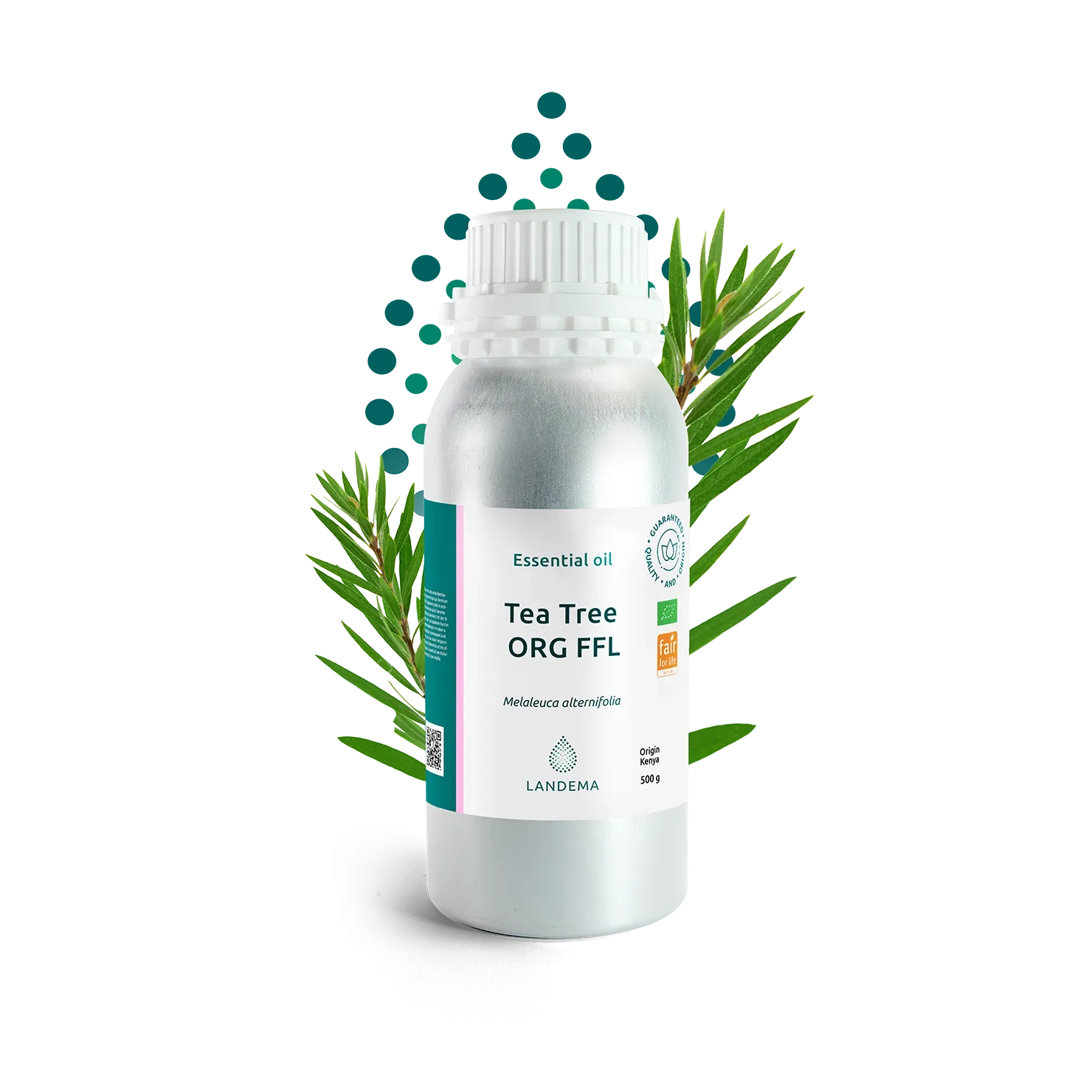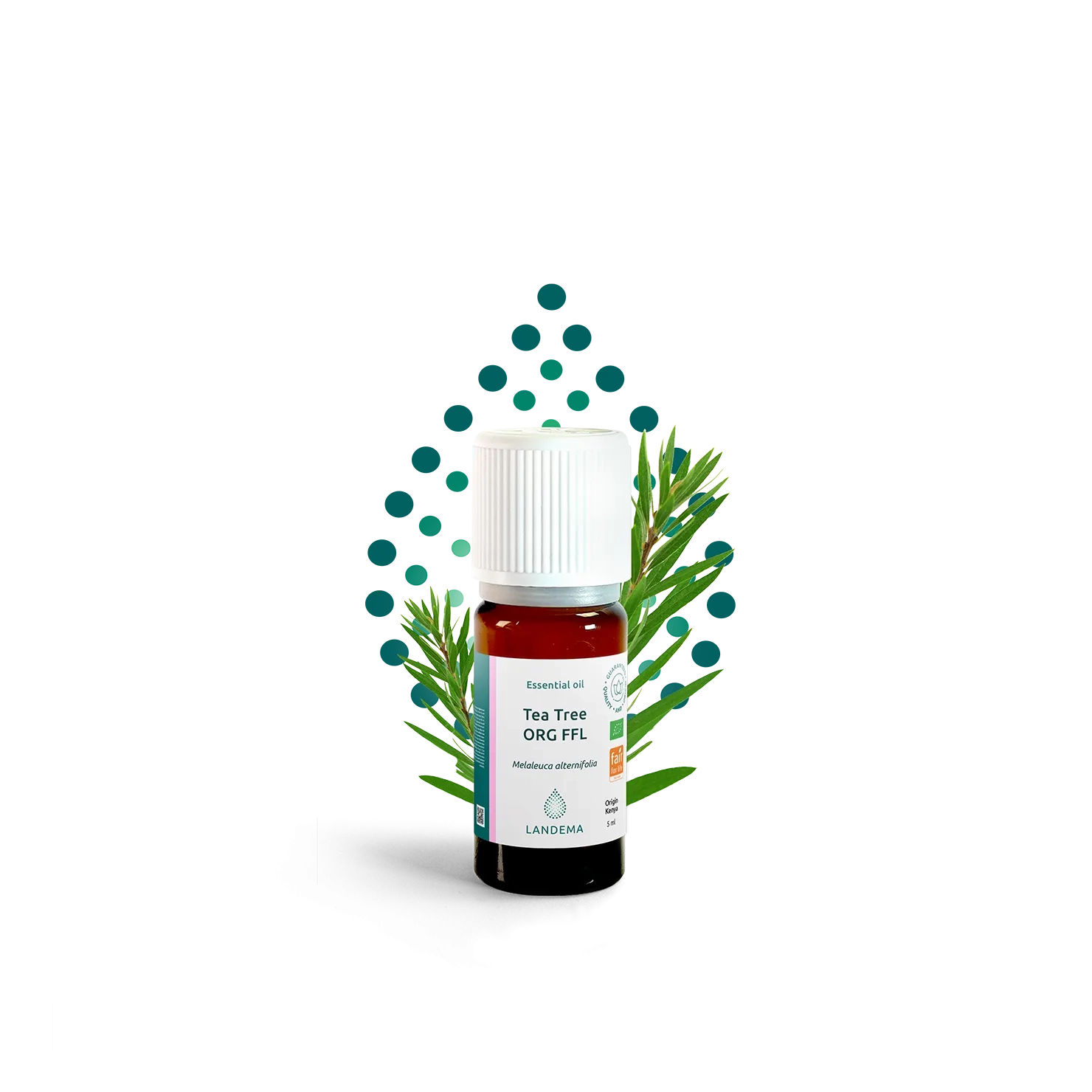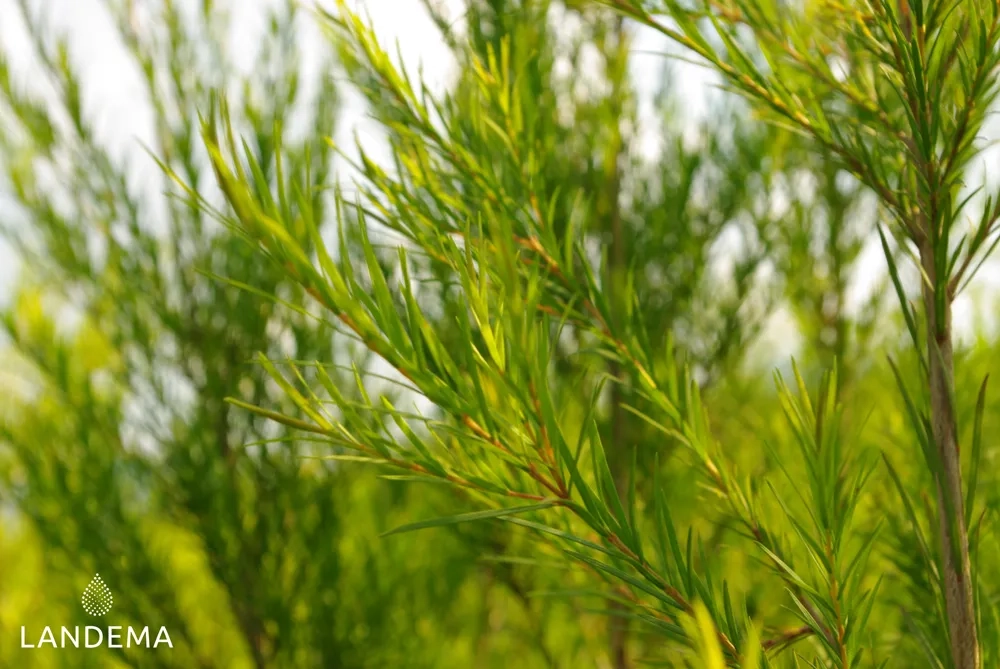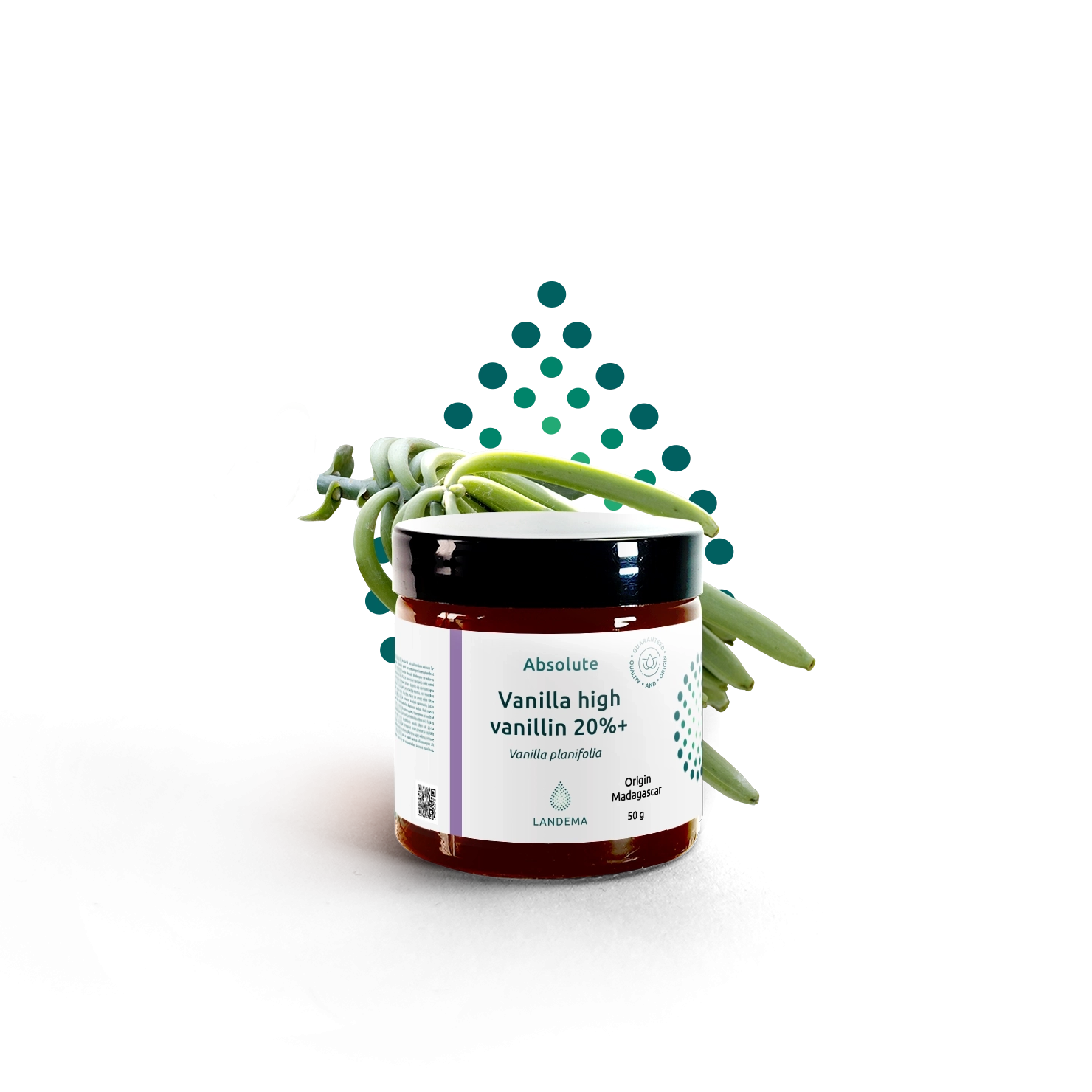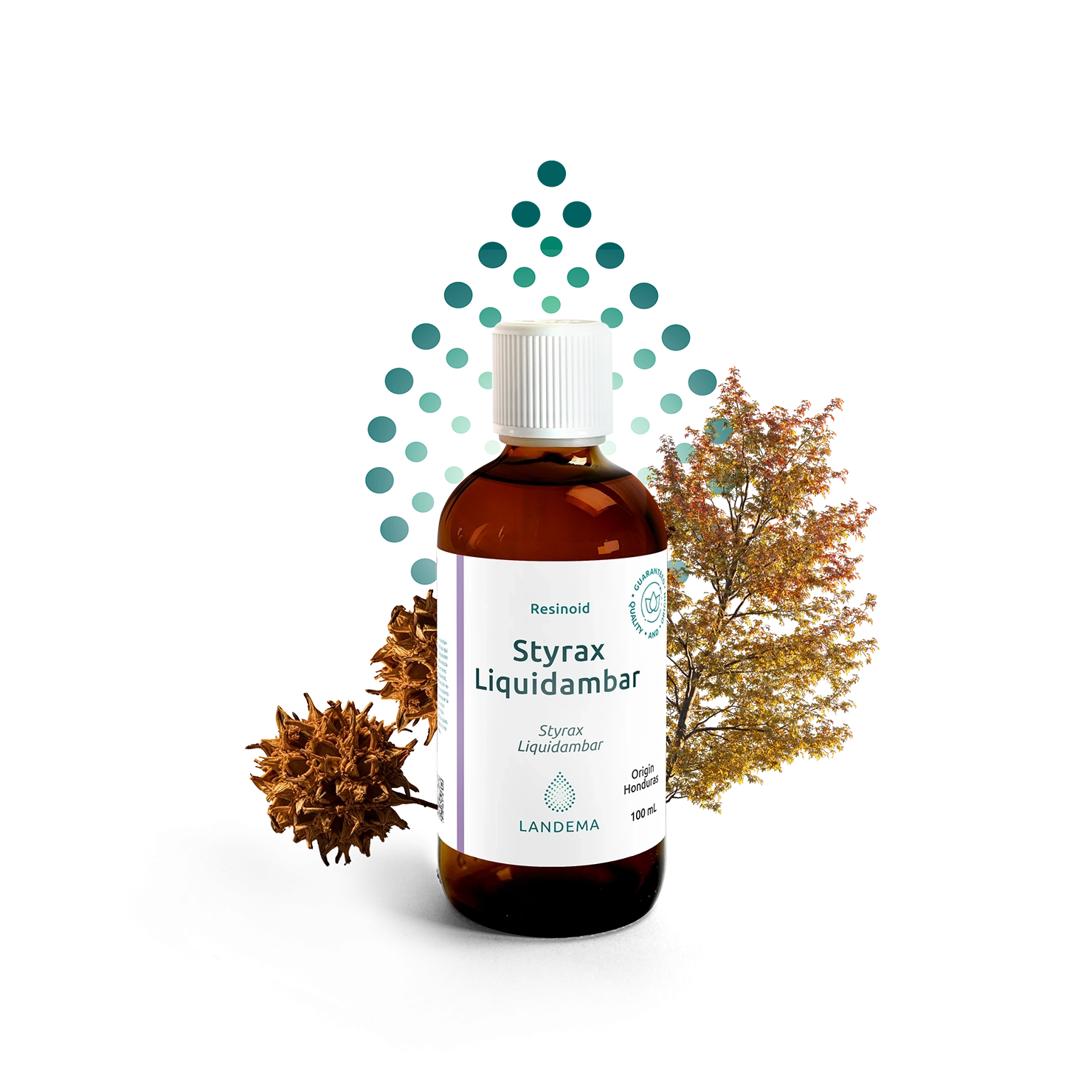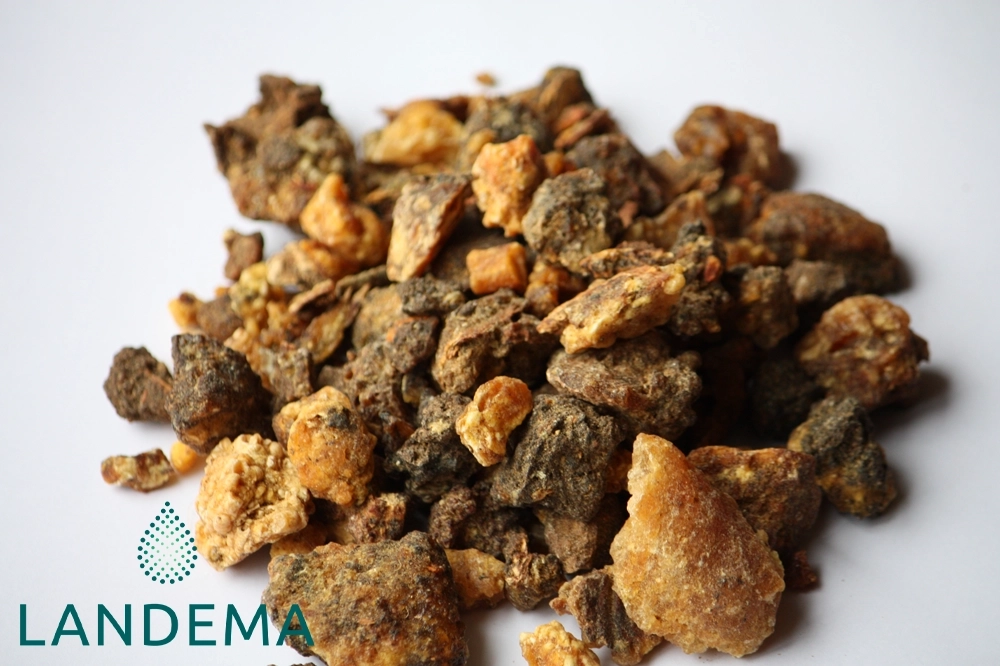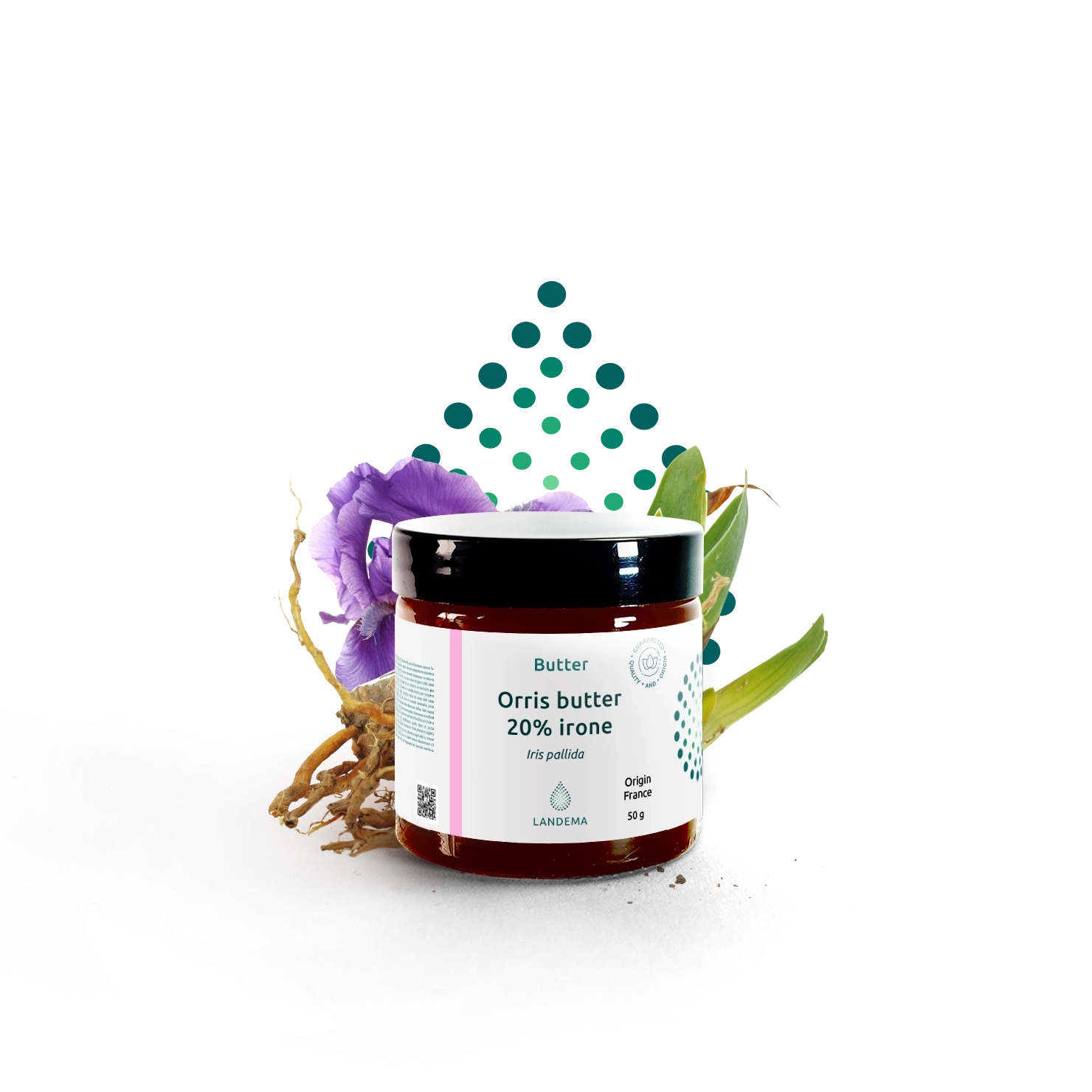Description
Our organic Fair for Life tea tree essential oil comes from a supply chain in Kenya, managed by local cooperatives. Distilled on-site, it offers professional quality, a powerful olfactory profile, and a guaranteed origin. It is perfect for cosmetic, aromatic, household, or agricultural applications.
We invite you to explore our Fair For Life certification initiatives in this detailed article.
- Certifications : Fair Trade certified according to the Fair for Life standard, ORGANIC : Coming from organic farming, certified by ECOCERT FR-BIO-01
- Landema commitment : Engaged sourcing
- Country of manufacturing : KENYA
- Country of harvest : KENYA
- Part of the plant : Leaf
- Composition : 100% pure, natural and integral. Chemotyped.
- Olfactory notes : aromatic, woody, terpenic
- Quality and origin guaranteed: botanically and biochemically identified, a certificate of analysis provided with each purchased product.
- Controlled and packaged in our workshops
Production
Harvest
A tea tree grown at the foot of Mount Kenya
Native to the swampy regions of Australia, the tea tree (Melaleuca alternifolia) is an evergreen shrub widely known for its powerful aromatic properties. Although originally cultivated in Oceania, its cultivation has expanded to the African continent, where the warm, sunny climate favors its development.
Our organic Fair for Life tea tree essential oil is obtained from leaves grown in Kenya, on the fertile slopes of Mount Kenya, in a more equitable agricultural system. This production method allows local farmer cooperatives to enhance their expertise while adhering to strict organic standards.
Manufacturing
Handcrafted distillation
We collaborate with an experienced local partner for the production of our tea tree essential oil. The entire processing chain adheres to the Fair for Life certification standards, from cultivation to packaging.
Here are the main extraction steps:
-
Harvesting mature tea tree leaves when their active compound content is optimal.
-
Gentle grinding of the leaves to facilitate the release of aromatic compounds.
-
Steam distillation in a still, without solvents or additives.
-
Cooling and natural decantation to separate the essential oil from the hydrosol.
-
Filtration, analysis, and bottling in accordance with Landema quality standards.
The result: a 100% pure and natural essential oil, with a documented biochemical profile.
Harvesting calendar :
- jan
- fev
- mar
- avr
- mai
- jui
- jul
- aou
- sep
- oct
- nov
- dec
Application
Main areas of application :
Cosmetic Aromatherapy - Parapharmacy Flavor - Food Agriculture - Gardening Veterinary Household Spa - Well-being
 Cosmetics
Cosmetics
A widely used active ingredient in purifying care
Thanks to its content of terpenes and cineole, tea tree essential oil is a common ingredient in treatments for blemished skin, oily hair, or dry scalps.
Frequent applications:
-
In cleansing gels, purifying lotions, or care oils for blemish-prone skin.
-
In synergy with treatment shampoos or soothing hair masks.
-
To enhance shaving products or intimate hygiene products.
 Agriculture - Gardening
Agriculture - Gardening
An asset for natural preparations
Rich in active molecules, tea tree essential oil is valued in homemade phytosanitary solutions:
-
To purify seedlings, substrates, or prevent mold.
-
In diffusion or spraying (heavily diluted), for its repellent effect on certain pests.
-
It can be added to macerations or plant teas aimed at strengthening vegetable crops.
 Veterinary
Veterinary
A natural solution to handle with care
In animals, and under the guidance of a veterinarian, tea tree essential oil can be used:
-
Diluted in a carrier oil for local application, in case of targeted skin care.
-
In natural repellent formulas against parasites.
-
In animal hygiene products, at very low concentrations.
Always use the essential oil diluted.
 Homecare - Household
Homecare - Household
A ally in natural cleaning formulas
Due to its powerful scent and purifying volatile compounds, tea tree essential oil is a common base in:
-
Disinfectant or air freshener sprays.
-
Homemade laundry detergents, multipurpose cleaners, or floor products.
-
Essential oil diffusers, to purify the surrounding air.
 Spa - Well-being
Spa - Well-being
A revitalizing oil to integrate with subtlety
Valued for its invigorating scent, tea tree essential oil is used in revitalizing or detoxifying care rituals.
Examples of use:
-
In diffusion in rest areas or steam rooms for its fresh notes.
-
In synergy with tonic massage oils or in bath salts.
 Aromatherapy :
Aromatherapy :
An essential oil for purifying formulations
Our Fair for Life tea tree essential oil is particularly rich in terpinene-4-ol, a molecule known for its benefits in aromatherapy.
Principal components:
- γ-terpinene (10 to 28%)
- Terpinen-4-ol (30 to 48%)
- 1,8-cineole (eucalyptol) (≤ 15%)
- Para-cymene (≤ 12%)
- α-terpinene (5 to 13%)
This composition makes the oil a must-have in respiratory, skin, or atmospheric hygiene formulations when used diluted.
Technical and regulatory
Detailed information :
| Commercial designation : | Tea tree Essential oil Kenya ORG FFL |
| Product's Familly : | TEATREE |
| Type of extract : | Essential oil |
| INCI Cosing : | 100% MELALEUCA ALTERNIFOLIA LEAF OIL |
| Country of manufacturing : | KENYA |
| Country of harvest : | KENYA |
| Part of the plant : | Leaf |
| Declared domestic use : | Ingredient |
| Botanical name : | Melaleuca alternifolia (Maiden & Betche) Cheel (Syn : Melaleuca linariifolia var. alternifolia Maiden & Betche) |
| Composition : | 100% pure, natural and integral. Chemotyped. |
| Regulated sale : | Non |
| CAS EINECS : | 85085-48-9 |
| CAS TSCA : | 68647-73-4 |
| CE number : | 285-377-1 |
| Registered in food inventories : | Yes |
| FEMA GRAS : | 3902 |
| FDA : | - |
| COE : | 275 |
| Flash point (°C) : | 54 |
| Minimum shelf life (month) : | 36 |
| Internal reference : | B892F |
| Transport Data Dangerous Goods : | 3/III/1197 |
Hazard statements :
H226
Flammable liquid and vapour.
H304
May be fatal if swallowed and enters airways.
H315
Causes skin irritation.
H411
Toxic to aquatic life with long lasting effects.
Technical and regulatory documents :
Usage tips
Manual:
Ingrédient parfumant (Teneur maximale : 3 gouttes pour 10 ml de composition finale) ou à utiliser en diffusion, de préférence à froid, à l'aide d'un appareil approprié (Diffuser sur des durées n'excédant pas 20 minutes. Ne pas diffuser dans une chambre pendant la demi-heure précédant le coucher ou pendant le sommeil.. Assurer une bonne aération et ne pas diffuser dans des espaces confinés non ventilés. Ne respirer pas les huiles essentielles au-dessus de l’appareil de diffusion). Ne pas ingérer ni appliquer pur sur la peau. Tenir hors de portée des enfants. Ne pas utiliser pour les enfants de moins de 7 ans, les femmes enceintes et allaitantes, les personnes ayant des antécédents de troubles épileptiques ou convulsifs ainsi que chez les personnes allergiques aux huiles essentielles et extraits de plantes.
Consult our guides: storage and preservation methods and precautions for use
Latest products
Choose a concentrate
of exceptional plants
Your wishlist

